ANTHONY ADDAMS converts his fishing boat into a tug
When Ron Smith said he was arranging a special day at our pond for tug towing, I said: “I do not have a tug’! He said that so long as I could add a hook for towing to any of my model boats, that would at least allow me to enter. That set me thinking and soon I got started on a scheme to convert the ARTR Catherine fishing boat into a tug, whilst also enabling the model to revert to a fishing boat as the mood took me.
The plan was to construct a new deckhouse structure to replace the two hatch covers that identified Catherine as a fishing boat. This would be a single long hatch cover with a tug wheelhouse and funnel as in Photos 1 and 2 of the finished model. In this way, within a matter of seconds, the model could be operated as either a tug or a fishing boat. The new creation would be named ‘Imatug’, yes a shortened version of ‘I’m a tug’.
Enjoy more Model Boats Magazine reading in the monthly magazine.
Click here to subscribe & save.
In the July 2009 MB issue there was a previous article of mine, ‘Catherine Customised’ where I described how the ARTR Thunder Tiger model had various alterations to make it more realistic, less fragile and more practical as a working model. So, this is a further reincarnation, Photos 3, 4 and 5. The basic model hull now becomes ‘Share-a-hull’ or Shareahull as the title line suggests.
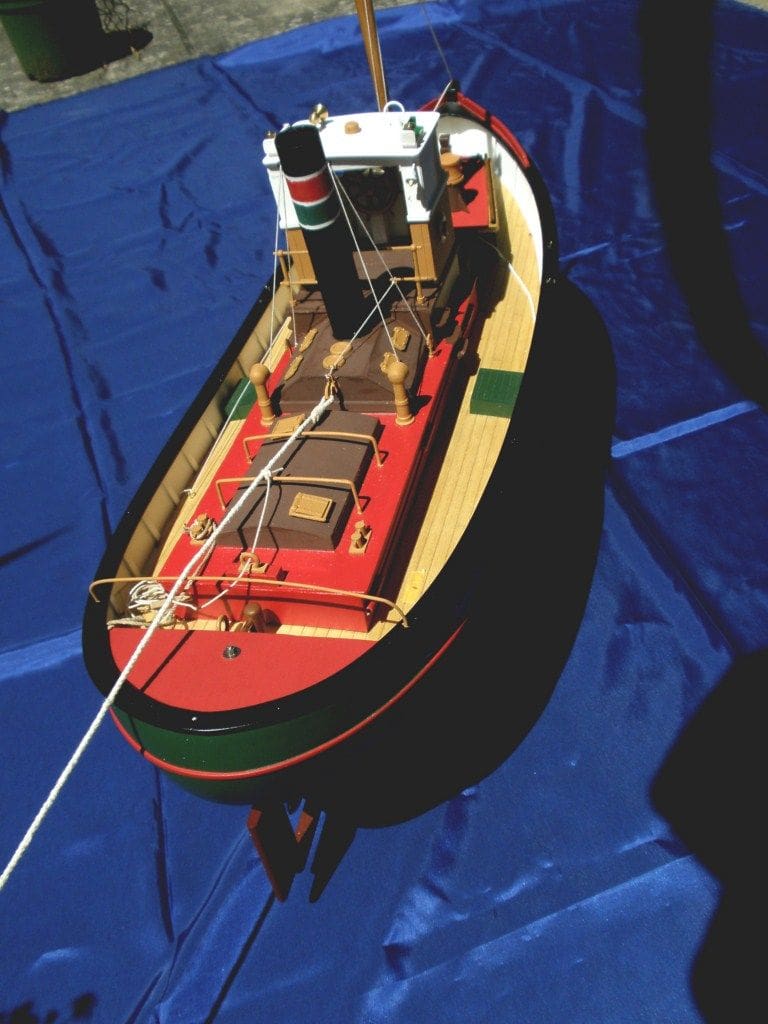
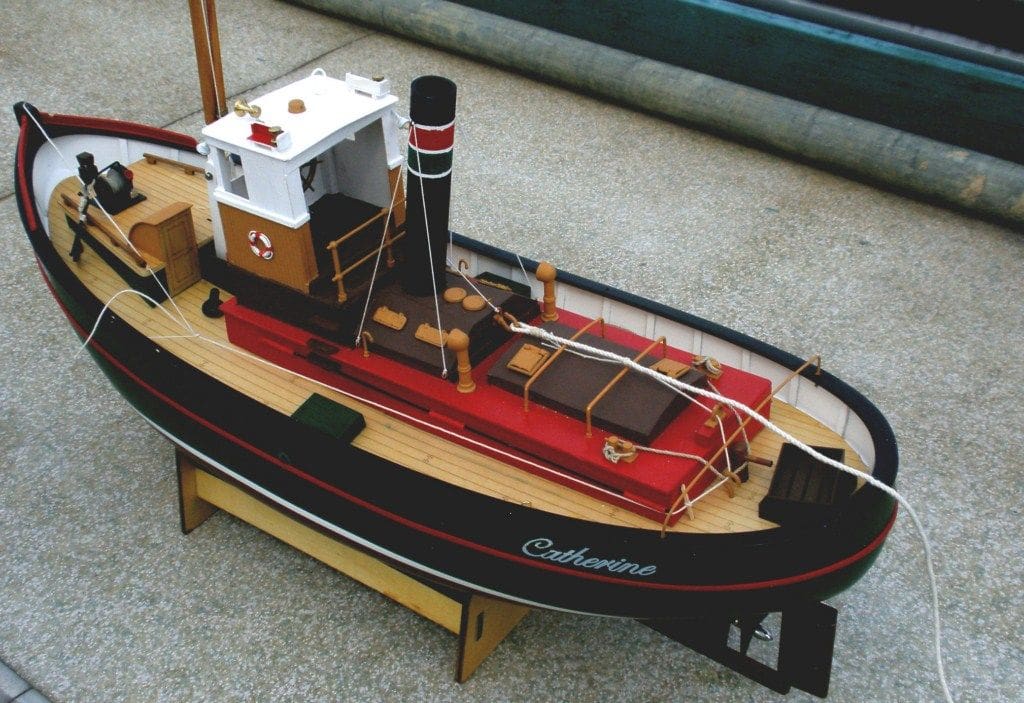
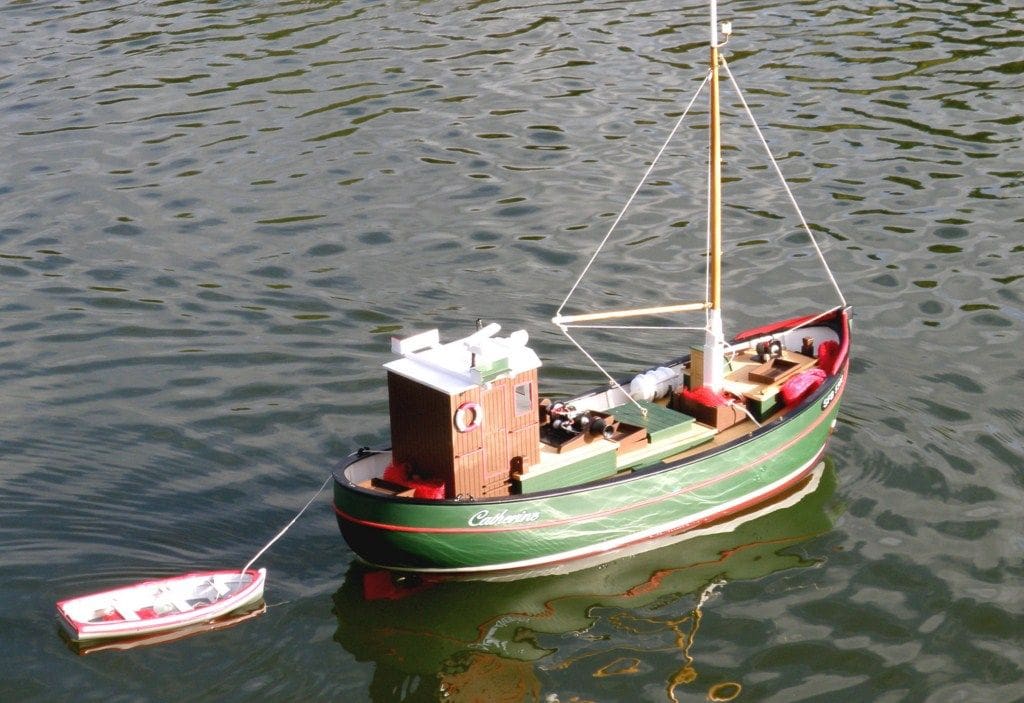
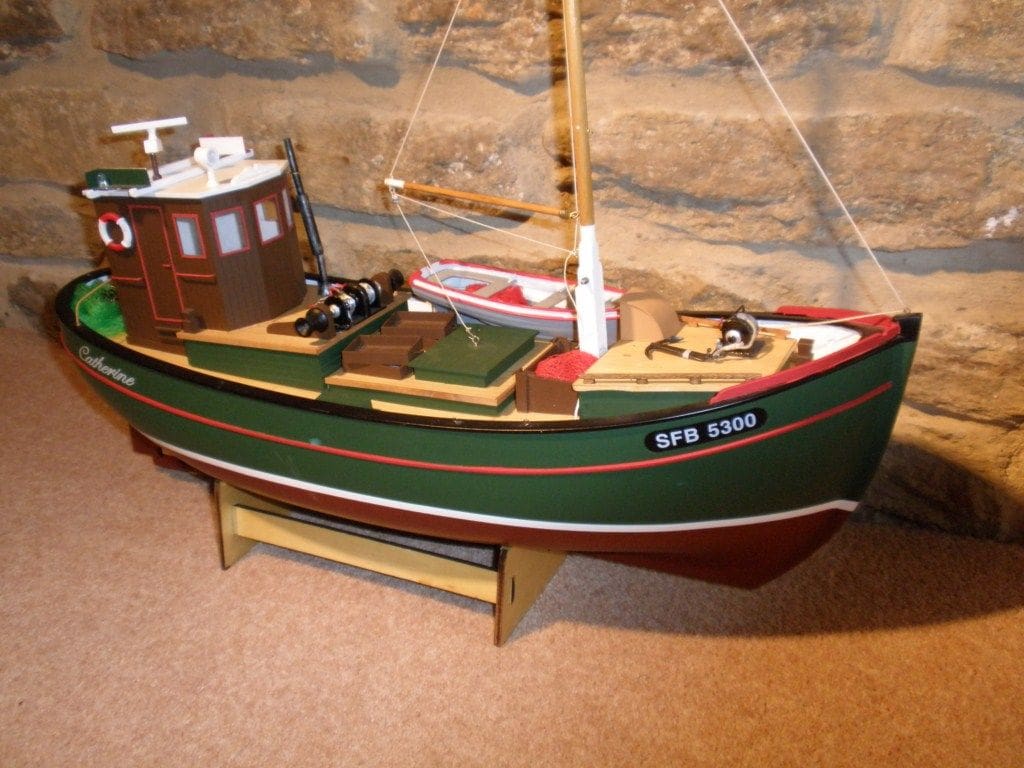
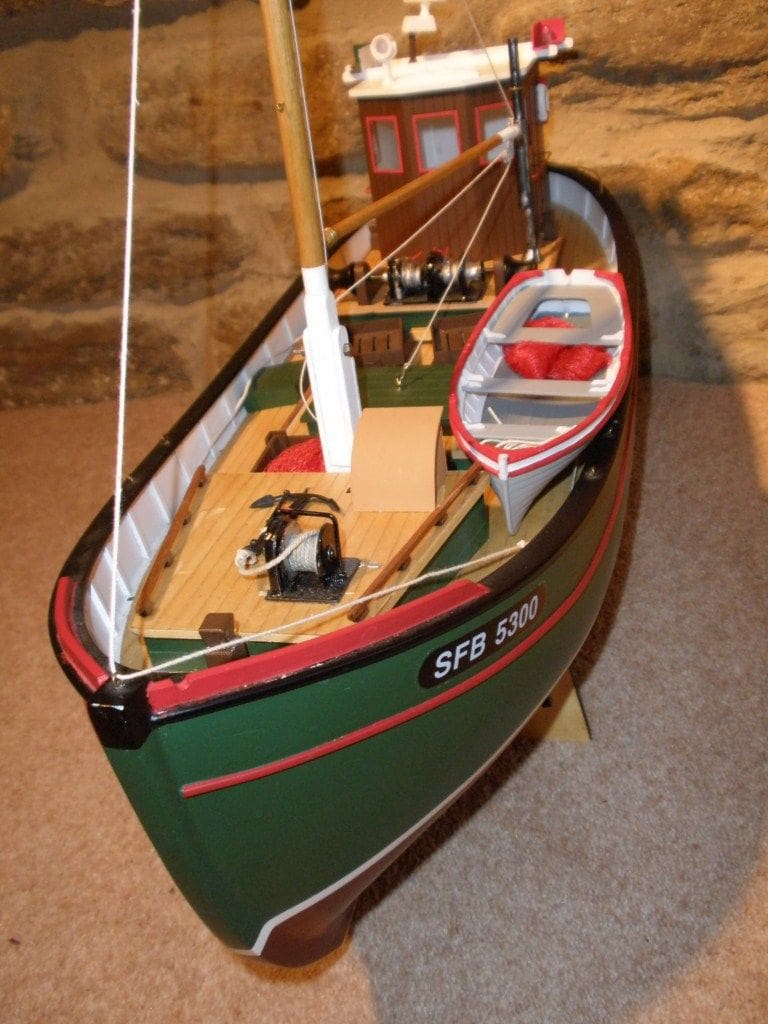
Conversion to Imatug
The design for the new hatch cover was very roughly sketched out full size to get the proportions correct. Photo 6 shows the basic ‘tug’ superstructure unit made from 1/32 inch plywood sheet, its pieces cut out with scissors and glued with PVA glue to form the finished painted structure you see in Photo 7 with its accompanying sketch. For added strength at the corner joints, small square section strips were inserted and the lower sides of the base unit also had to be trimmed to match the curvature of the deck. The basic tug superstructure took only a matter of hours to assemble. Good quality model grade plywood is so smooth that little sanding is needed before sealing and painting. Although styrene sheet could have been used, my preference is always to use wood, but mind you, the funnel is a section cut from a surplus plastic water pipe! I suppose years ago before the advent of plastic plumbing, some model makers would fashion funnels out of brass.
Photo 8 is a close-up of the wheelhouse front. Various fittings from the accessory box, accumulated over the years, completed the detail work, but some parts had to be scratch built. For example, the tow hook is a domestic household item hammered flat, with bits of wire glued on to it to resemble a non-working quick release system together with a lanyard leading to the wheelhouse. The metal fittings were mostly glued in place using impact adhesive, which I personally find much easier to work with, and is more reliable, than superglue. Also, wherever possible with small fittings, there is a tag or dowel inserted into the base as a reinforcement. At the stern, Photo 9, a simple flat raised deck piece hides the fish boxes beneath it with the top of a rudder bolt to simulate the small rear deck cover to the quadrant that a real tug would have. In real life this bolt could allow a tiller to be fitted if the wheelhouse rod and chains connection failed.
In front of the wheelhouse, Photo 10, two pieces of plywood, painted red, convert the deck to a more tug like appearance and a capstan adds to the illusion, but of course I appreciate that this conversion of a fishing boat into a tug does lack some authenticity.
One could perhaps do more changes, but all that was required was something to put on the water with which to have fun and which looked reasonably realistic. Another hidden advantage was not having to store another model at home if a completely new tug had been built. In due course, some rubber tyre fenders will be added and yes, the paintwork could be better, but it was a quick adaptation and the result is more than good enough for me.
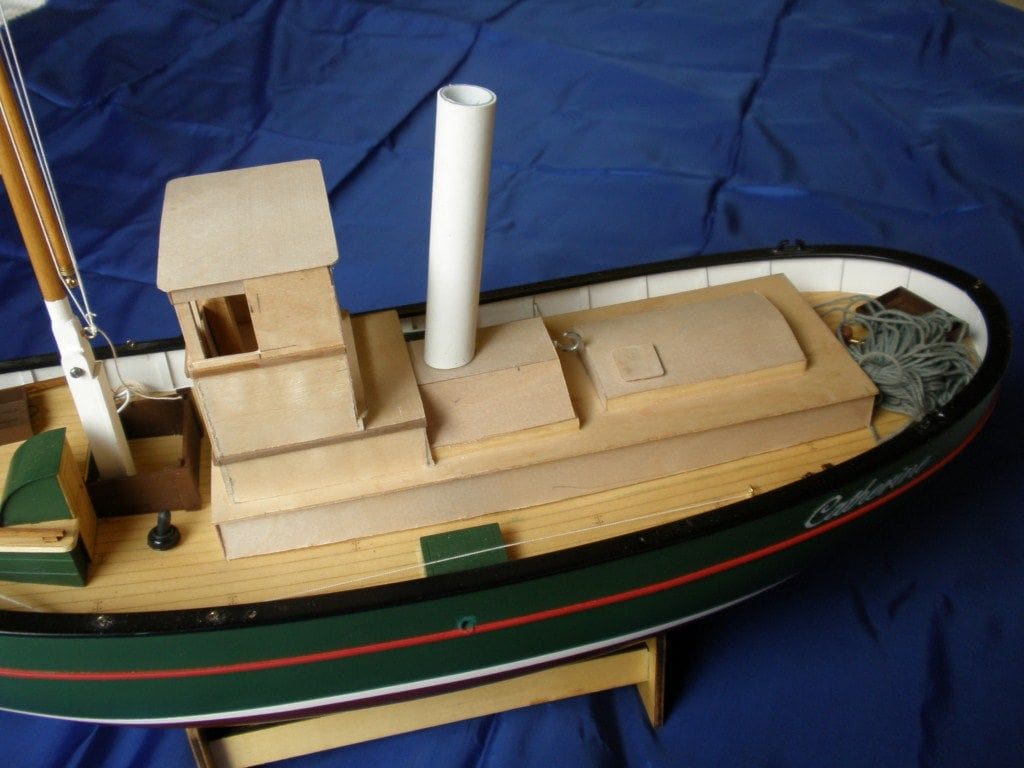
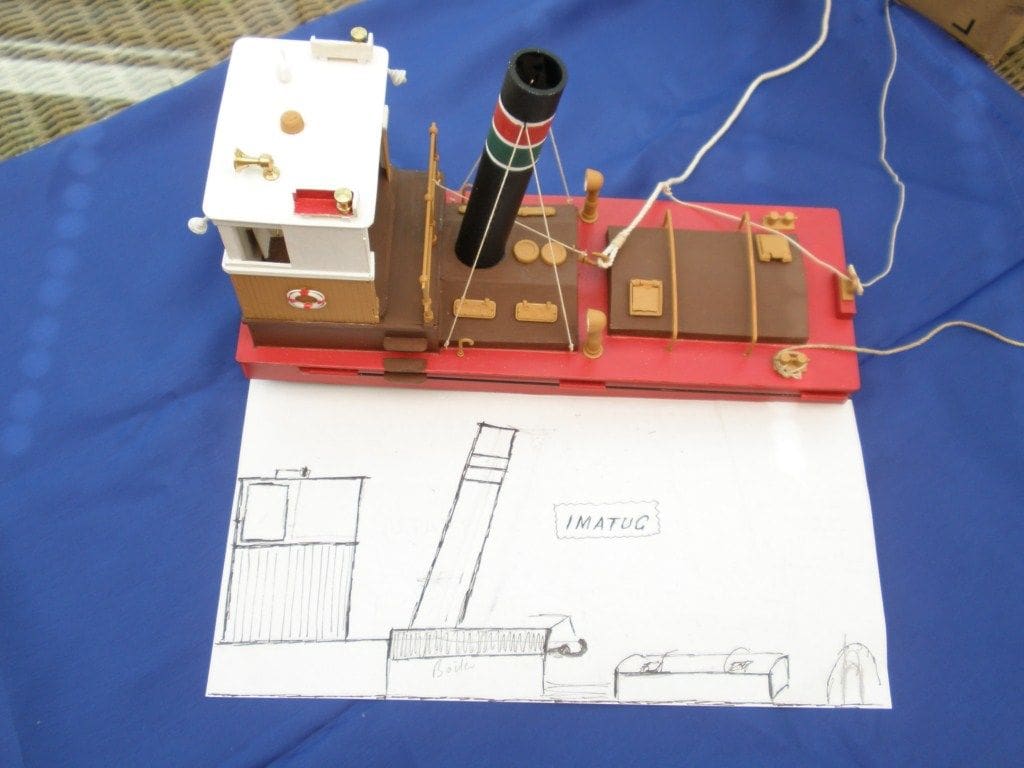
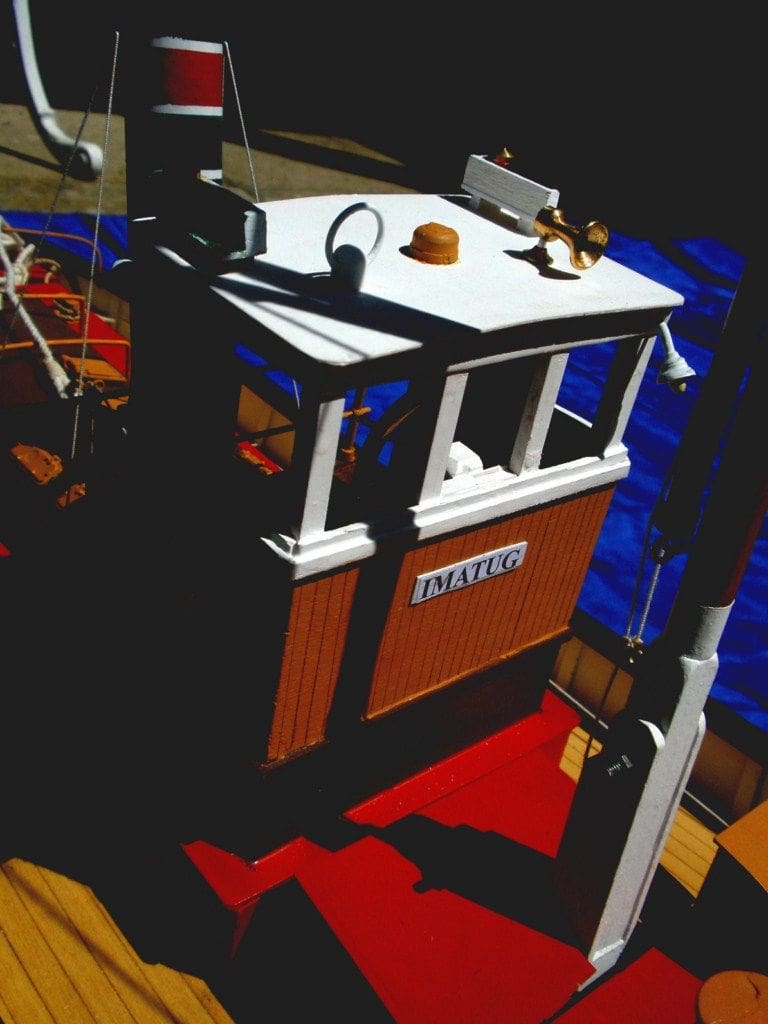
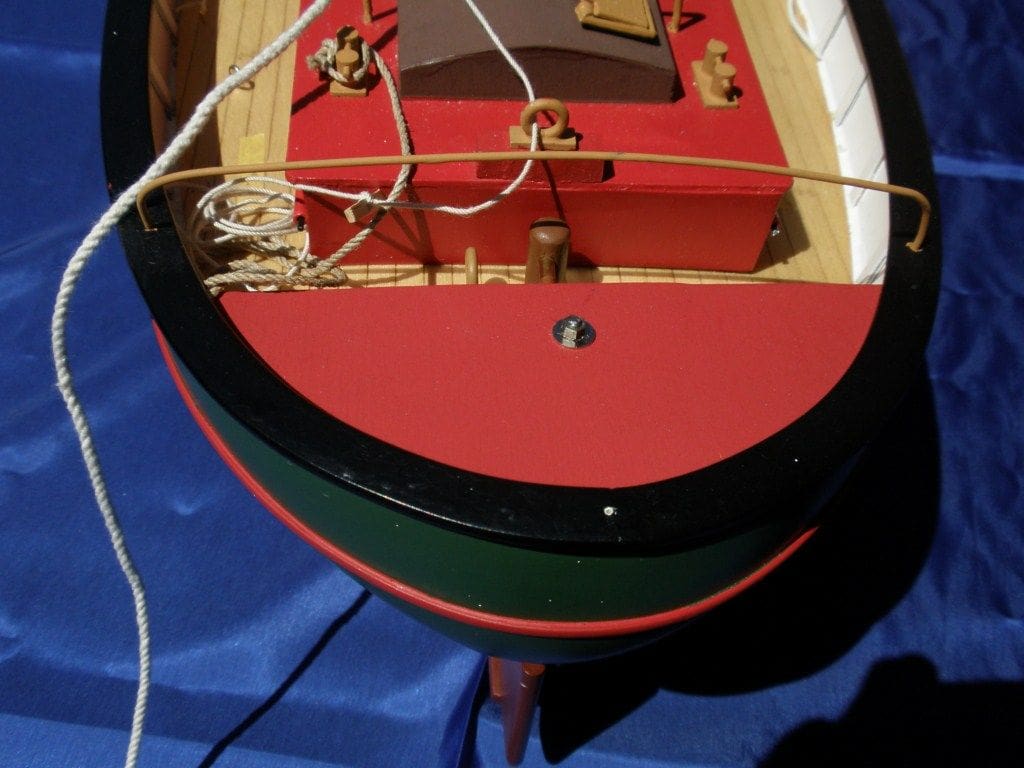
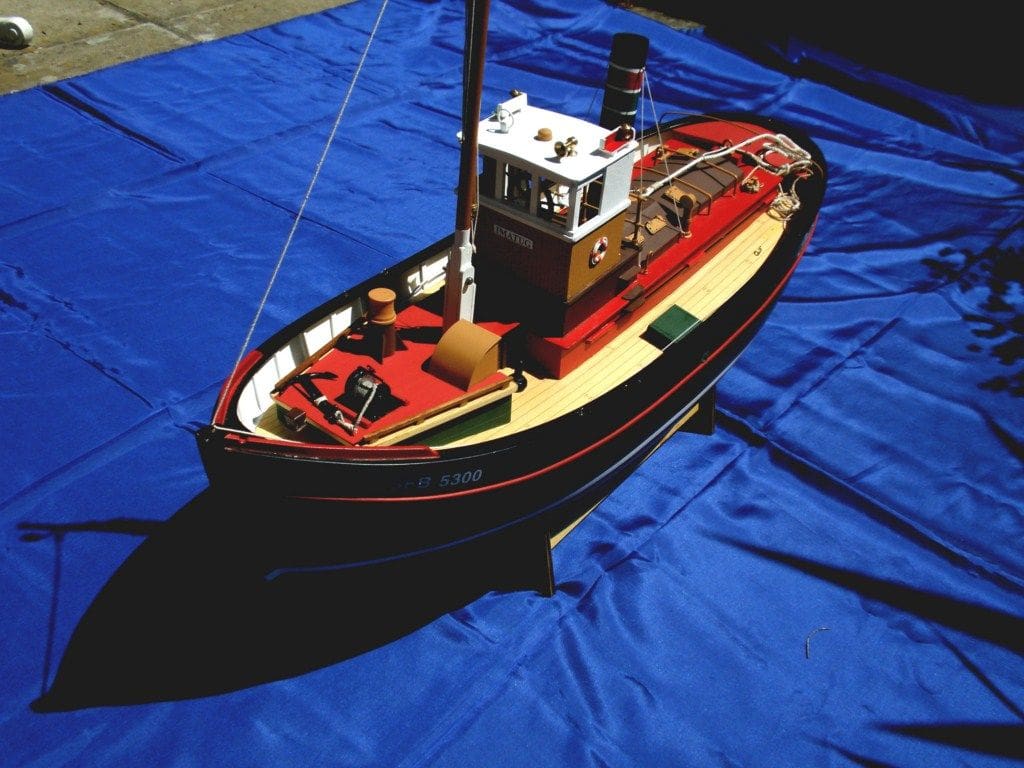
Towing
Thus, the day came in June for the tug towing event. Ron Smith had set buoys to create a course for the towing competition. It was a beautiful day, sunny and warm, very tranquil and any stress from everyday life vanished in such lovely surroundings. However, once it was my turn, the stress levels started to rise, Photo 11!
Imatug (ex-Catherine), Photo 12, tows a barge quite well and is up to the task. However, after starting off by going round the wrong side of the first buoy, I then began to get the hang of it, but inevitably it was the final docking that got me swearing. With a strong offshore wind and after many failed attempts I gave up, Photo 13! My excuse was that the wind kept blowing the barge away from the quayside, and I could not get the tug into the right a position to push it in, so I came last out of the 14 entrants.
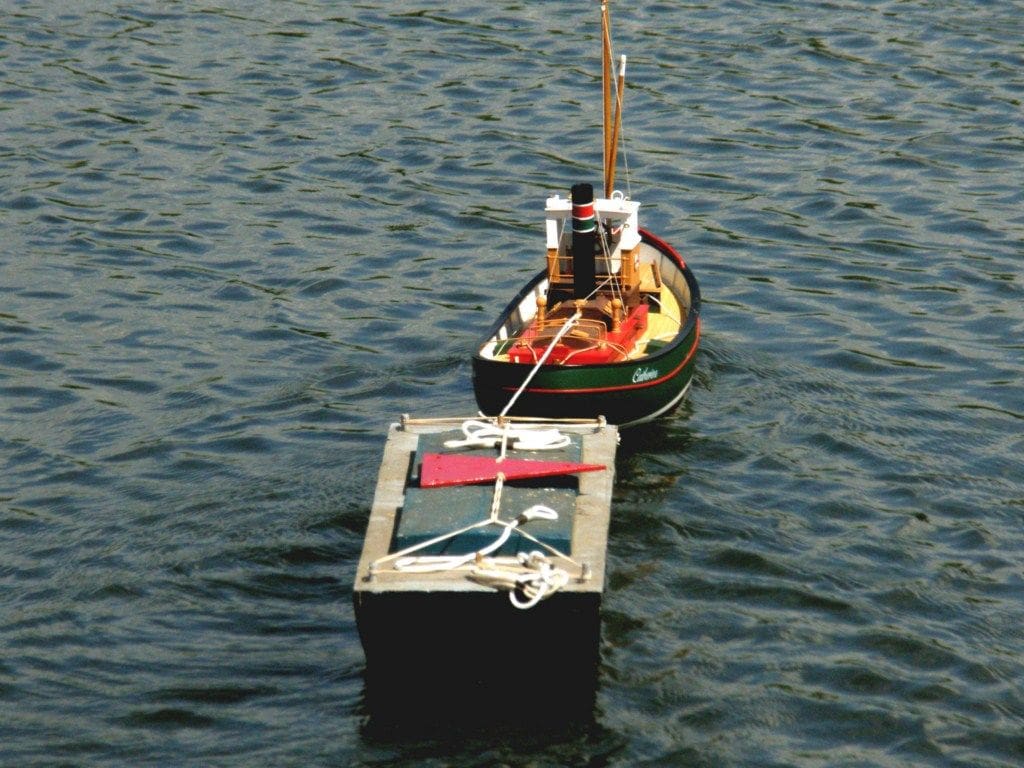
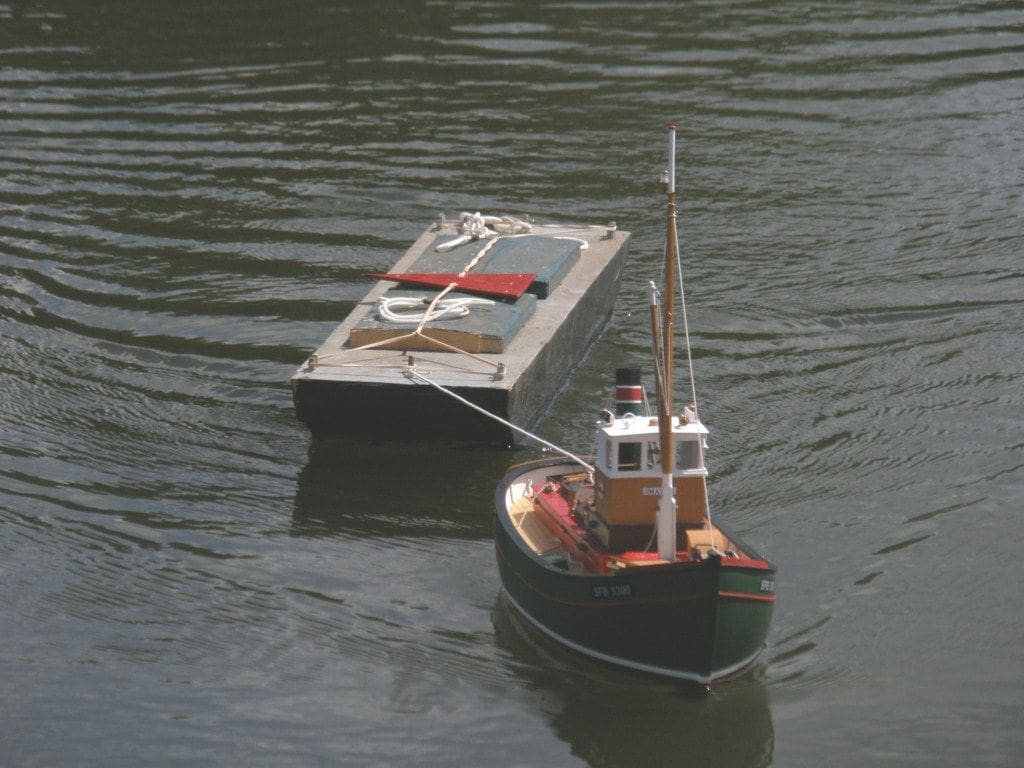
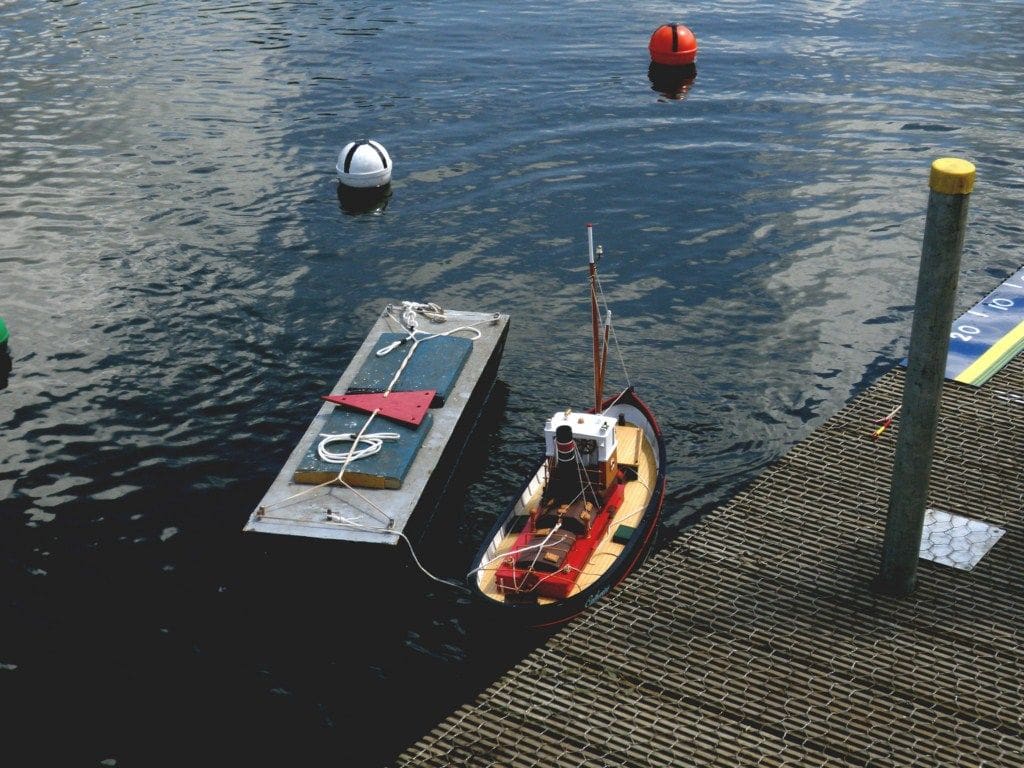
A robust model
The hull of this Thunder Tiger model is robustly made with a GRP hull. It rides the waves well without shipping water, the motor and electronics are well engineered and the compact size of the model makes it convenient for transport. Changing the two masts of the original model to a single lowering mast makes the model much safer and easier to carry. As Imatug it resembles a tug, but any tug enthusiast would criticise the lack of true authenticity, but with the corporate name of Shareahull, it looks really attractive and receives pleasant comments at the pondside in whatever ever form it is presented.
Changing over from fishing boat to tug takes only one minute and the tug parts fit safely in a shoe box, Photo 14, which is good enough for me.
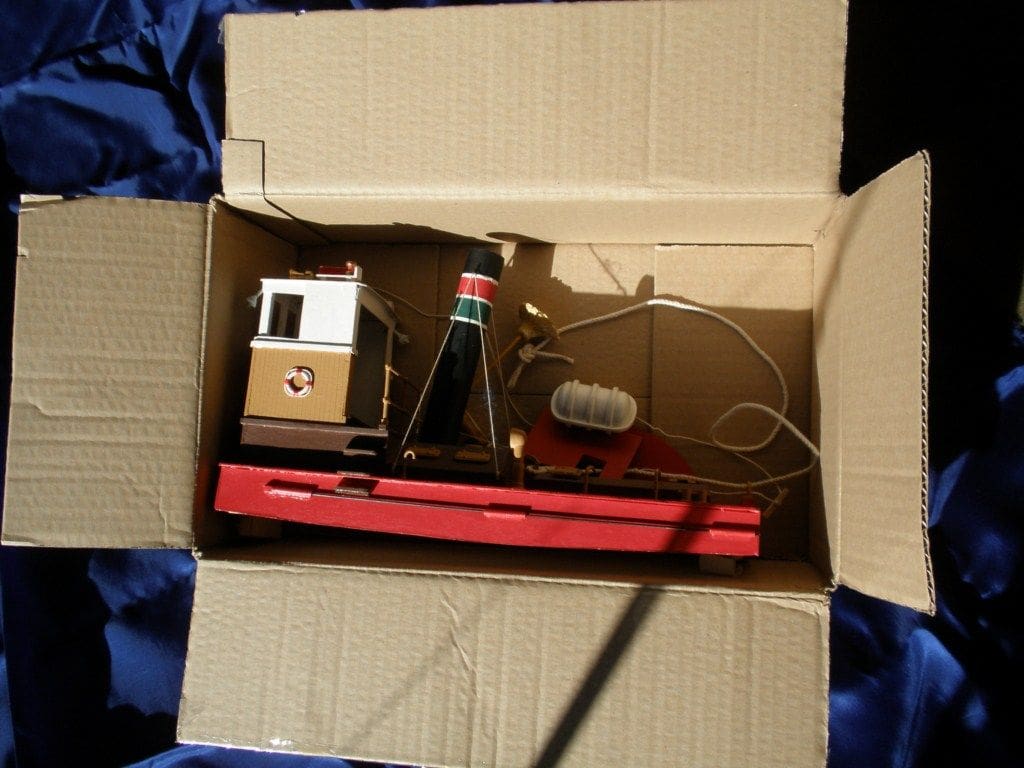
Conclusion
This exercise was just to get a model tug onto the water quickly. Based on the Thunder Tiger model it truly is ‘Two for One’ and perhaps with a bit of imagination the same process could be applied to other similar models.




